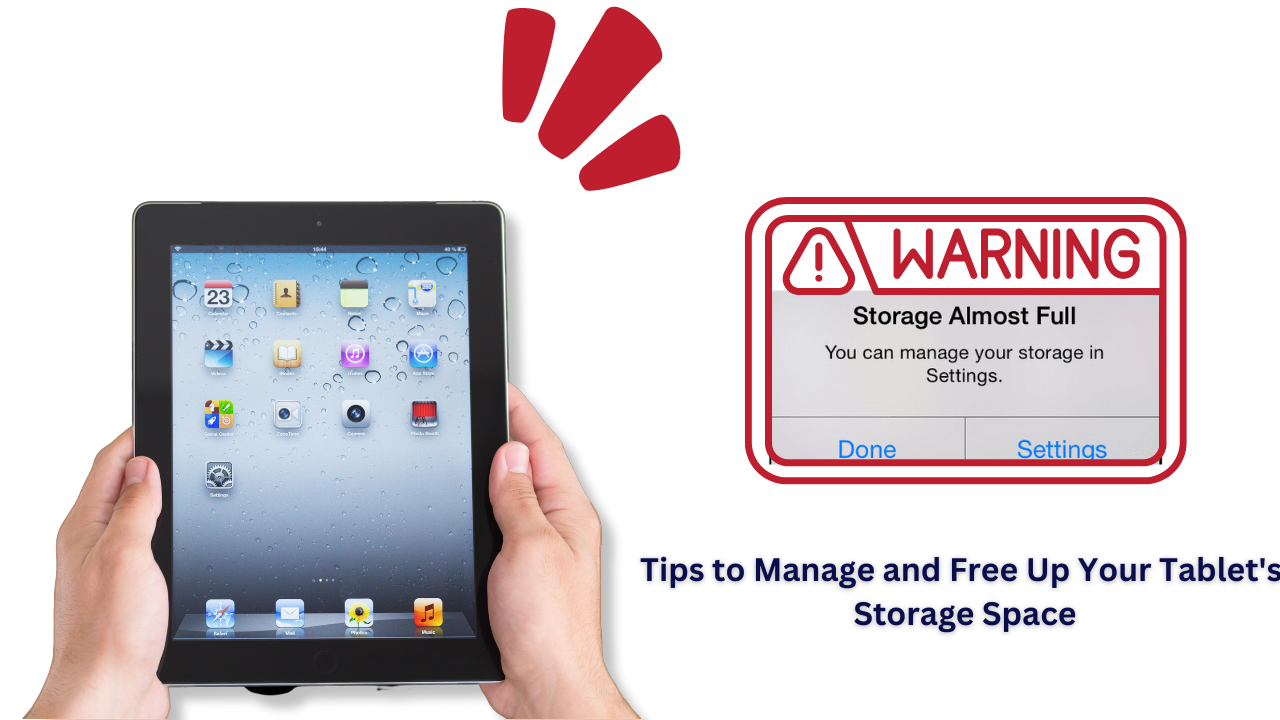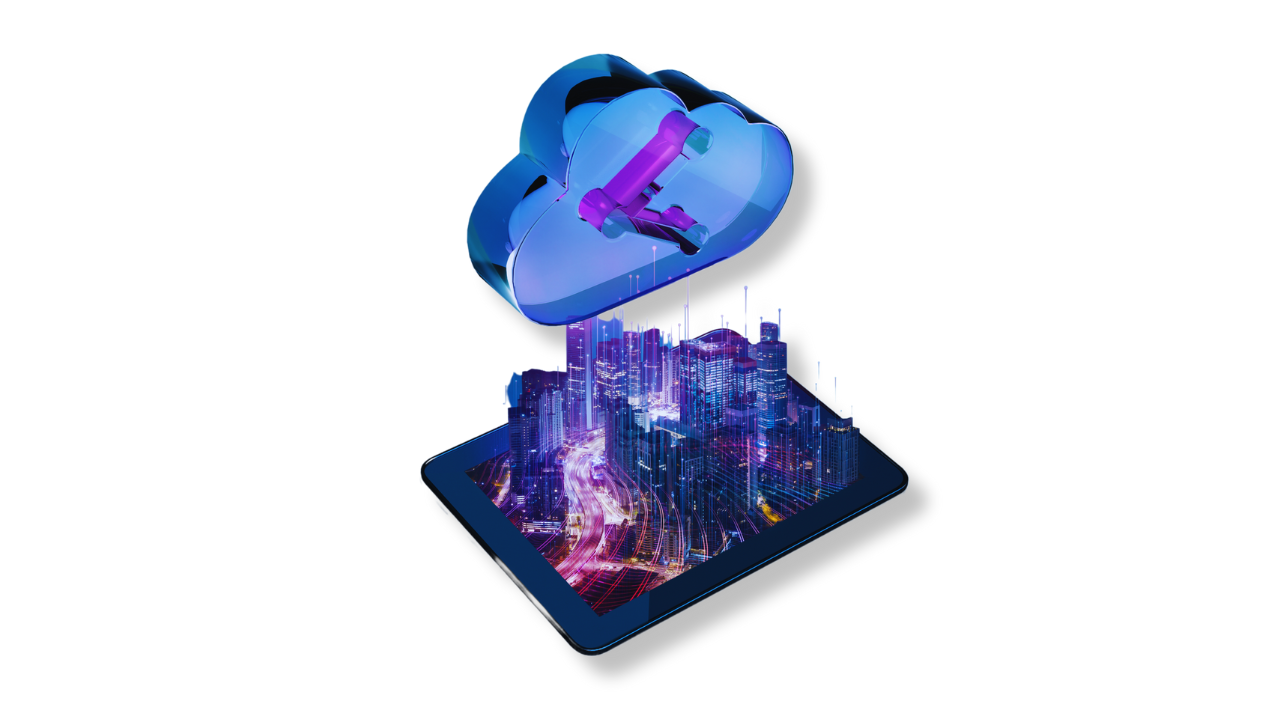
Is your tablet storage full? Don’t worry. We’ve got you covered. Whether you’re running out of room to store your photos, music, videos, or documents, freeing up space on your tablet is easy.
This guide will provide you with our top tips on managing and freeing space on your device. We’ll cover everything from clearing the cache to moving files to the cloud. So, if you’re looking for ways to keep your tablet running smoothly and with plenty of storage space, read on!
Why the tablet storage becomes full so easily
Tablets are becoming more popular due to their lightweight design, portability, and convenience. However, they can quickly fill up large files and apps, leaving you limited space. There are several reasons why the storage can become full so easily.
First, many tablets come with very limited internal storage. Depending on the make and model, it can be as low as 8GB or 16GB of space. This amount is not suitable for storing large applications, files, videos, music, and photos.
Second, tablet storage can be used up quickly by pre-installed applications. While some of these applications can be uninstalled, others cannot be removed. This leaves less space for other apps and files.
Third, some users may have multiple accounts set up on their tablet, such as a personal account and a work account. Each account can contain various apps and data that can add up quickly and occupy much space.
Finally, apps can take up a lot of storage space if they’re not regularly updated. This is because outdated versions may contain redundant or unnecessary data that will use up storage unnecessarily.
Overall, these are the main reasons tablets can quickly fill with data. Fortunately, there are ways to free up space and optimize your tablet’s storage capacity.
How to Manage and free up space
Check what’s taking up the most space.
It’s important to identify what takes up the most space on your tablet before trying to free it up. There are a few places to look: photos and videos, music, apps, and system files.
Photos and videos are usually the culprits for hogging up storage. Try and delete any photos or videos you no longer need or back them up onto an external drive or cloud storage. You can also use a photo-sharing app to share photos with friends and family and still have access to them if needed.
Music is another big one for taking up storage on tablets. Consider archiving or deleting songs that you no longer need or want. You can also stream music from services like Spotify or Apple Music, so you don’t need to store all your music on your device.
Apps can also be very space intensive, depending on their size. Try deleting any old apps you no longer use or moving them to an external drive if you want to keep them. If you use certain apps regularly, consider installing a lightweight version of the same app, which will take up less space on your tablet.
Finally, system files are sometimes the biggest culprit for taking up storage on tablets. You can check your system settings to see what files are taking up the most space and delete any you don’t need. You may also consider disabling any services or programs you don’t need, as these can take up valuable storage.
Delete old apps and files
When it comes to freeing up space on your tablet, one of the best places to start is by deleting old apps and files. Unused apps and files can take up precious storage space, so it’s important to clear them out from time to time.
The first step is to check which apps take up the most space. Most tablets have an app manager that shows you how much space each app is using. Look for large apps that you don’t need and uninstall them. This will free up a significant amount of space.
You should also delete any files that are not required any more. On most tablets, the Files app shows you the size of each file and allows you to delete it with a tap. Check all folders, including the Downloads folder and the Recycle Bin, for old files you no longer need.
Finally, delete any cached data that may have accumulated over time. Cached data can take up a lot of storage, so it’s important to clear it out regularly. Go to the Settings menu and look for an option labeled “Clear cache” or “Clear storage”. Tap this option and confirm if you’d like to delete the cached data.
By following these steps, you should be able to quickly delete old apps and files and free up storage space on your tablet.
Move files to the cloud
One of the most effective ways for tablets with storage full is using the cloud. With cloud storage, you can upload large files such as music, photos, and videos that won’t take up room on your device. All you need to do is sign up for a cloud storage service, such as Dropbox, Google Drive, or iCloud, and you can start uploading and downloading files quickly and easily.
Using the cloud is simple. Just install the app from the App Store, sign in with your account credentials, and start transferring your data. You can select individual files or multiple files to upload, and then once they are uploaded, you can access them at any time. Additionally, you can share your files with others, even if they don’t have the same cloud storage service.
Another advantage of using the cloud is accessing your data from anywhere. You don’t need to be near your tablet or laptop – you only need an internet connection, and you can access your files. It is especially helpful if you need to use a file while on the go.
Using the cloud is a great way to free up space on your tablet while having access to all your important data. So take advantage of this feature and start uploading your files today!
Use an external storage device
External storage devices are also a great way to free up space on your storage full tablet and keep it running smoothly. They come in different sizes and have different capacities, so you can find one that meets your needs. For example, if you want to store movies and music, you should use a larger-capacity device.
When looking for an external storage device for your tablet, ensure it’s compatible with the tablet’s operating system and file format. You also want to consider the transfer rate of the device, which will determine how quickly files can be moved from your tablet to the storage device.
Once you’ve got your device, you only need to plug it into your tablet’s USB port. From there, you can transfer files and folders from your tablet to the device with just a few clicks. When you need to access them again, just plug the device back into your tablet, and the files will be available.
External storage devices are a great way to free up space on your tablet without deleting any important data. They also provide extra security since they can be easily removed and stored away when not in use. With an external storage device, your tablet will have plenty of room for all your data!
Enable data compression
Data compression is the process of reducing the size of data files, allowing them to take up less storage space. Compressing your files allows you to free up a significant amount of storage on your tablet.
The best way to enable data compression on your tablet is by downloading a third-party app. Many different apps are available, so do some research and pick the one that best suits your needs. Many of these apps will allow you to compress all types of files, including photos, videos, and documents. They also offer various levels of compression, giving you more control over the amount of storage you save.
Once you’ve installed the app, open it and select the files or folders you want to compress. Depending on the app, you can select the desired compression level and begin the process. Remember that the higher the compression level, the smaller the file size will become. When the process is finished, you’ll have freed up some much-needed storage space on your tablet.
Data compression is an effective way to free up storage on your tablet, but it’s important to remember that compressed files may lose some of their quality when they are reduced in size. Be sure to check any compressed files before deleting the original copies to ensure they still look good and contain all the necessary information. With these tips, you can get your tablet’s storage back under control and keep it running smoothly.
Additional Tips to Keep the tablet running smooth
- Regularly run a virus scan: Make sure to routinely check for viruses, malware, and other malicious software on your tablet. This will help protect the device from potential damage that could reduce the overall performance and cause storage issues.
- Use Automatic Updates: Keeping the tablet up-to-date with the latest software is essential for running efficiently and avoiding storage issues. Enable automatic updates so your tablet can keep up with the latest technology and run smoothly.
- Clean up temporary files: Temporary files can pile up quickly and take up unnecessary storage space. To avoid this, it’s important to regularly delete these temporary files by using a specialized tool or cleaning app.
- Monitor memory usage: Apps and programs can take up a lot of RAM and cause your tablet to slow down. To prevent this from happening, regularly monitor the memory usage on your tablet and close apps that are taking up too much RAM.
- Optimize the display settings: Optimizing the display settings can also help your tablet stay fast and efficient. Adjust the brightness and resolution of the display to get the best balance between battery life and picture quality.
- Disable background applications: It’s easy for background applications to hog system resources and cause your tablet to slow down. Disable any unnecessary background applications using up storage space or processing power to keep things running smoothly.
By following these tips, you can ensure that your tablet stays running smoothly and keeps storage issues at bay. Regular maintenance is the key to ensuring your tablet works at its best, so don’t forget to clean up regularly!
Conclusion

We hope this guide has helped provide you with the information and tips needed to free up space on your tablet and keep it running smoothly. We know how valuable our devices are and want to help keep them functioning well.
Make sure to regularly delete old apps and files, and keep an eye on what’s taking up the most space. If all else fails, consider investing in an external storage device or using data compression. With a little bit of care, you can make sure that your tablet stays in top shape.